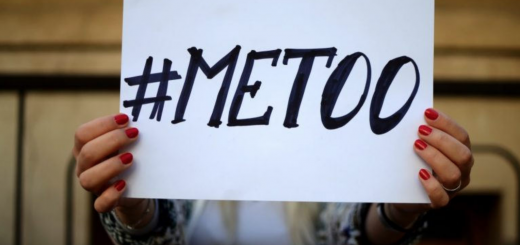R v Chauhan: Sexual Assault, Consent, Intoxication and Honest but Mistaken Belief (Part II)
This commentary is the second part of a two-part series detailing and critiquing the decision of Thorburn J in R v Chauhan. The first part addressed the relevant facts, rules and analysis as it related to the first complainant in the case, A.C. The second part will address the second complainant, P.W.
Unlike Thorburn J’s conclusion of the incident relating to A.C., I believe that Thorburn J made numerous errors in law with respect to her analysis of P.W.’s incident which would warrant an appeal to the Ontario Court of Appeal.
Facts Relating to P.W.
P.W. claimed that Chauhan and Kayilasanathan administered a drug to her with the intention to overpower her and enable them to have illicit sexual intercourse with her. Chauhan and Kayilasanathan claimed that they neither drugged P.W. nor had illicit sexual relations with P.W. Both of the accused testified that they had had a sexual encounter with P.W. on the evening in question, however it was consensual. Kayilasanathan claimed that he and P.W. kissed and that he licked her breast. Chauhan claimed that he and P.W. sexually touched one another, kissed and he performed oral sex on P.W.
On the evening in question (February 12, 2011), P.W. agreed to meet Chauhan for a drink at Traders Bar in the Sheraton hotel in downtown Toronto. She did not know that Kayilasanathan would be joining them. P.W. had a drink at Traders Bar, met Kayilasanathan and the three of them went to Kayilasanathan’s hotel room to have a few drinks. Then they all went out to the C Lounge.
Would P.W. Have Consented?
P.W. claimed that she was not attracted to either of the accused and, although she would go out to drink and socialize with them, she would not have consented to any sexual activity with Chauhan since he was married and “marriage means something to her” (Chauhan, para 145). However, Thorburn J rejected P.W.’s claim and based her ruling, that there was a “possibility that [P.W.] might have consented to engage in sexual activities with either or both of the accused” (para 145), on the following evidence:
(a) the tenor of the emails with Chauhan leading up to the incident most notably, “Can I borrow some of your brown charm and brains… strawberry blonde hair and boobs only gets you so far” and, “I believe that whatever you say goes. Consider yourself special”, (b) the videotape that depicts P.W. dancing, drinking and having fun with both Chauhan and Kayilasanathan, and (c) the fact that P.W. did not implement any plan to stay somewhere for the night and instead returned to the hotel room with the accused at the end of the evening when there was no plan to engage in any other activity (para 146).
I argue that Thorburn J erred in her conclusion that there was a possibility that P.W. would have consented to the sexual activities. Thorburn J founded her conclusion on three pieces of evidence: the emails, the video tape, and P.W.’s lack of accommodations for the night.
With respect to the emails, while the text may be interpreted as her flirting with Chauhan, flirtation is simply a type of social interaction which suggests some degree of attraction but most certainly does not 100 percent of the time lead to sexual activity. Therefore, it is unreasonable to infer from the act of flirtation that a person would consent to sexual activities.
Second, the purpose of going to a bar or club is to drink, dance, and to have fun. It would be outrageous to assume that willingness to consent to sexual activities could be inferred from simply drinking, dancing, and having fun. For example, two or more female friends go to a club to have a girls’ night. They drink, dance, and have fun with one another. One cannot infer from this situation, that one or both of the female friends would be willing to consent to sexual activities with the other.
Similarly, the facts that P.W. did not implement any plan to stay somewhere for the night and that she returned to Kayilasanathan’s hotel room are not evidence that P.W. would have consented to sexual activities. There are many instances where a person does not make prior arrangements to stay with someone or to go home after a night of drinking but would not consent to sexual activities with the party or parties they were spending time with. Additionally, after a night of drinking, it is not rare that someone who is too intoxicated to get home will stay the night at the house or hotel room of the person or people that they socialized with that night.
As such, I argue that Thorburn J erred in basing her conclusion that P.W. may have consented to sexual activities with the accused on such weak and easily refutable evidence.
Did P.W. Consent?
According to the Supreme Court of Canada (“SCC”) in R v Ewanchuk, [1999] 1 SCR 330 [Ewanchuk],
[t]he complainant’s statement that she did not consent is a matter of credibility to be weighed in light of all the evidence including any ambiguous conduct. The question at this stage is purely one of credibility, and whether the totality of the complainant’s conduct is consistent with her claim of non-consent (Ewanchuk, paras 29-30).Thorburn J found that there was reasonable doubt as to whether P.W. consented to the sexual activities with each of the accused, since the totality of P.W.’s conduct was not consistent with her claim of non-consent.
While there is no evidence to suggest that P.W. made attempts to stop or prevent the sexual activities, there is also no evidence to suggest that P.W. actually consented. According to the SCC in R v JA, [2011] 2 SCR 440 [JA], [t]he definition of consent for sexual assault requires the complainant to provide actual active consent throughout every phase of the sexual activity” (JA, para 66). Additionally, “the only question for the actus reus is whether the complainant was subjectively consenting in her mind. The complainant is not required to express her lack of consent or her revocation of consent for the actus reus to be established” (para 37). It is evident from P.W.’s testimony that P.W. did not subjectively consent to the sexual activities in her mind: P.W stated that during the sexual activities, “[s]he thought she had to get away and although she found it very difficult to move, she took great pains to move to the other bed” (Chauhan, Appendix B, para 126). As such, I contend that Thorburn J erred in overlooking the fact that there was no actual active consent, and P.W. did not subjectively consent in her mind.
Honest but Mistaken Belief of Consent
Thorburn J ruled that even if P.W. did not consent to the sexual activities, she “accept[ed] the evidence of each of the accused that he had an honest if mistaken belief that P.W. consented to the sexual encounter because her outward appearance as shown on the video was that of a person who seemed to be in control of her movement” (Chauhan, para 155).
As outlined by the SCC in R v Osolin, [1993] 4 SCR 595 [Osolin], the defence of mistake of fact is available when an accused honestly but mistakenly believes that the complainant consented to the sexual activities (Chauhan, para 55 citing Osolin, 648-650). Additionally, there must be an “air of reality” to the defence.
Section 273.2 of the Criminal Code, RSC, 1985, c C-46 [Criminal Code] outlines when an accused is not able to use the defence of honest but mistaken belief of consent:
[i]t is not a defence to a charge under section 271, 272 or 273 that the accused believed that the complainant consented to the activity that forms the subject-matter of the charge, where (a) the accused’s belief arose from the accused’s (i) self-induced intoxication, or (ii) recklessness or wilful blindness; or (b) the accused did not take reasonable steps, in the circumstances known to the accused at the time, to ascertain that the complainant was consenting (Criminal Code).Regarding the first part of the test outlined by s. 273.2 of the Criminal Code, Chauhan and Kayilasanathan’s belief that P.W. had consented to the sexual activities did not come about as a result of their own self-induced intoxication, or recklessness or wilful blindness.
However, for the second step, neither of the accused took the reasonable steps to ascertain that P.W. was consenting. In Ewanchuk, the court stated that, “specifically for the purposes of the honest but mistaken belief in consent – ‘consent’ means that the complainant had affirmatively communicated by words or conduct her agreement to engage in sexual activity with the accused” [emphasis added] (Ewanchuk, para 49). Additionally, in R v Malcolm, 2000 MBCA 77 [Malcolm], the Manitoba Court of Appeal stated:
[the] issue is whether the accused is aware of circumstances which would lead a reasonable man to inquire further into the issue of consent. If the circumstances known to the accused are such that a reasonable man would not or might not take further steps to ascertain consent, then the accused will not be required to take any further steps either” (Malcolm, para 21).Chauhan testified that “he believe[d] [that P.W.] was moaning and he had the general impression she was enjoying [the sexual activities]” (Chauhan, Appendix B, para 33) and Kayilasanathan testified that P.W. “seemed to respond by moaning and holding him” (para 60). However, a possible moan – which could be evidence that P.W., in her intoxicated state, was moaning in pain or in objection to the sexual activities – does not seem sufficient to meet the standard of affirmative communication of consent on the part of P.W.
It is likely that a reasonable man in the same circumstances as both of the accused – where the complainant never said that s/he wanted to have sexual intercourse or engage in sexual activities, did not communicate verbally his/her agreement to engage in sexual activities at any point during the incident, and just lay on the bed and did not move while the sexual activities were taking place – would have at the very least asked if the complainant was okay upon noticing that the complainant was not doing anything to suggest that s/he enjoyed the sexual activities. Since this is likely what a reasonable person would do, and neither Chauhan nor Kayilasanathan did what a reasonable person would do, it is difficult to agree with Thorburn J that both the accused had an honest but mistaken belief in consent.
Additionally, in Ewanchuk, the court stated that, “[c]ommon sense should dictate that, once the complainant has expressed her unwillingness to engage in sexual contact, the accused should make certain that she has truly changed her mind before proceeding with further intimacies” (Ewanchuk, para 52). In the present case, P.W. stated “Wait. Stop. Aren’t you married?” to Chauhan (Chauhan, para 147). The phrase “Wait. Stop” would suggest that P.W. was affirmatively communicating that she wanted to stop. According to P.W., Chauhan grunted and continued what he was doing (Chauhan, Appendix B, para 126). Here, Chauhan failed to make certain that P.W. truly changed her mind before proceeding with further sexual activities.
While the first step of the test that prohibits the use of the honest but mistaken belief in consent may not apply to the accused, the second step, that neither Chauhan nor Kayilasanathan took reasonable steps to ascertain that P.W. was in fact consenting, more certainly does apply. As such, Thorburn J erred in finding that Chauhan and Kayilasanathan had an honest but mistaken belief in consent.
Conclusion
While I do agree with Thorburn J that there was reasonable doubt as to whether Chauhan met, drugged or sexually assaulted A.C. during the ex-cadet weekend, and whether Chauhan and/or Kayilasanathan drugged P.W., there are elements of Thorburn J’s decision regarding the sexual assault of P.W. that warrant an appeal.







Join the conversation